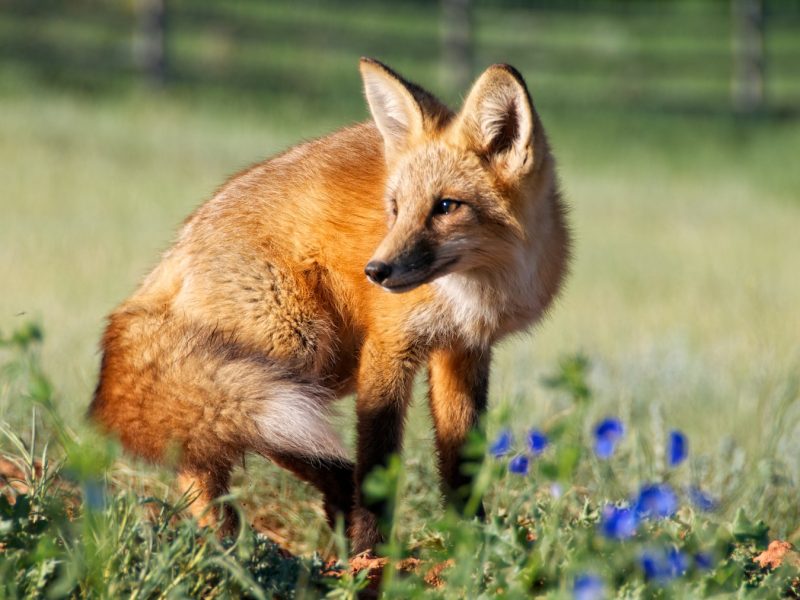
Thank you for your interest in saving injured wildlife.
Many wild animals are killed daily due to human interference in wild habitats, by cars, windows, cats and toxins.
The first thing to do when you find an injured wild animal is to protect yourself. If it is large or dangerous (deer, raccoons, skunk, etc.) call animal control to take care of it. If it is small pick it up with a towel and place it in a cardboard box, or scoop it up with the box or trap or other similar item.
Make sure it doesn’t bite you, especially if it is a mammal (because all mammals can carry rabies). If a mammal does bite you, don’t let it get away—it will need to be euthanized and tested for rabies; otherwise you will have to get post exposure rabies treatment. Most wild birds can bite fairly hard but only large birds or raptors (hawks, owls) can really cause damage. Remember that raptors’ weapons are their talons, not their beaks.
What do I do after I catch it?
Keep the animal in a cardboard box or carrier and bring it in to a wildlife rehabilitation facility. If you cannot get in right away, keep the box in a quiet dark place to reduce the stress as much as possible. The facility will have you sign a waiver and release the animal.
What will the doctor do?
The animal will be examined and it will be determined whether they are likely not only to survive their injuries, but recover to their full health. If they have a chance of full recovery, they will be treated for whatever injuries they have (usually including antibiotic therapy and surgery) and they will be hospitalized if needed, or they may be transferred to a local wildlife rehabilitator for recovery and physical therapy. If the injuries are severe enough to cause any lessening of their abilities at all, they will be considered not releasable and every attempt will be made to transfer the animal to a nature center or other educational facility.
If one of these facilities is not available, they will be humanely euthanized. This is preferable to releasing a crippled animal into the wild to starve to death or be eaten by a predator. In general, unless the animal is endangered, wildlife rehabilitation has little effect on the population of the particular species—what helps the most is what you and your family and friends can do at home to prevent injuries and otherwise help wildlife (see below).

Can I keep the animal after it gets better?
No. It is illegal in California to keep wild animals, dead or alive, without a permit or hunting license (California Fish and Game Code sections 3800-3806, 2000-2019 and 2116-2127 among others). In addition, it is unethical to keep an animal in a cage that should be free. It can also be dangerous or even deadly to you, your children or your pets if the animal is carrying certain diseases. If the wild animal is releasable, you may be able to watch or even assist with the release if you are interested.
What can I do at home?
There are many things you can do. Start with visiting the Audubon Society and follow their links. Most injuries to songbirds occur when they fly into windows and when cats attack them. Dogs will occasionally attack birds, but usually attack squirrels and other mammals. This is not only dangerous to the wildlife, but to your dog as well due to the potential to contract rabies from the wild animal.
Another thing you can do is to reduce the amounts of toxins you spill on the ground, especially antifreeze. Antifreeze is a toxin that will kill cats, dogs and children as well, and should never be left on the ground. Antifreeze and used motor oil should be recycled at local recycling centers.
Remember to cut your six-pack holders (the plastic rings) and other potential strangulation hazards (especially mask ear-loops) into small pieces before you throw them away, and make sure you cut used fishing line into short lengths (6 or 8 inches) as well—these two hazards kill huge numbers of wild animals.
Of course, the main threat to wildlife is habitat destruction by various means (which include direct destruction for farmland and buildings, climate change, introduction of non-native species and use of pesticides and other toxic chemicals). You can help prevent this by joining organizations like Audubon, National Wildlife Federation, the Sierra Club and many others.
Other things you can do include recycling as much as possible, buying recycled products and eating organic food. All of these reduce the stress on the environment and promote a healthier planet.
There are many other ideas on the internet as well.
